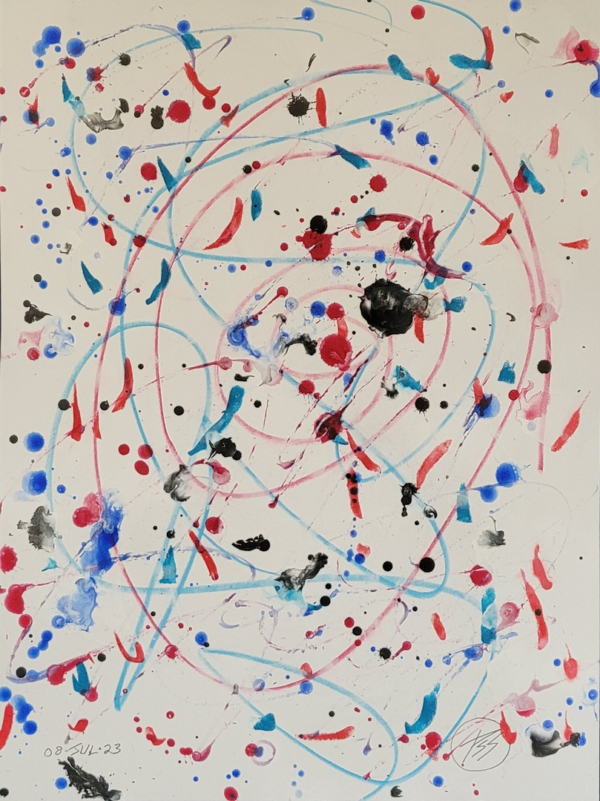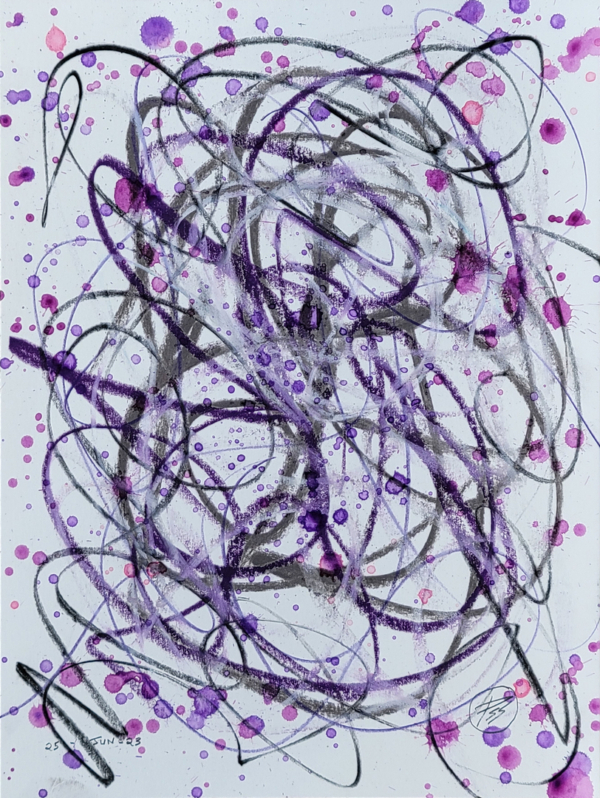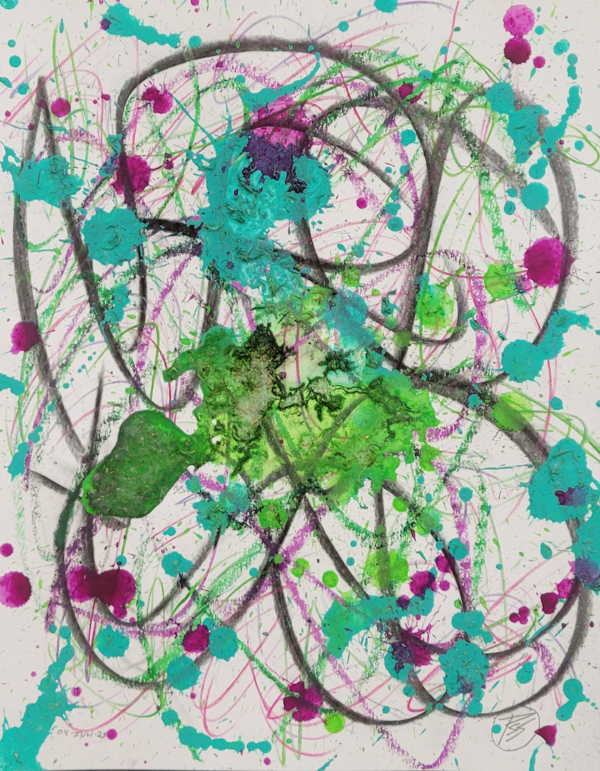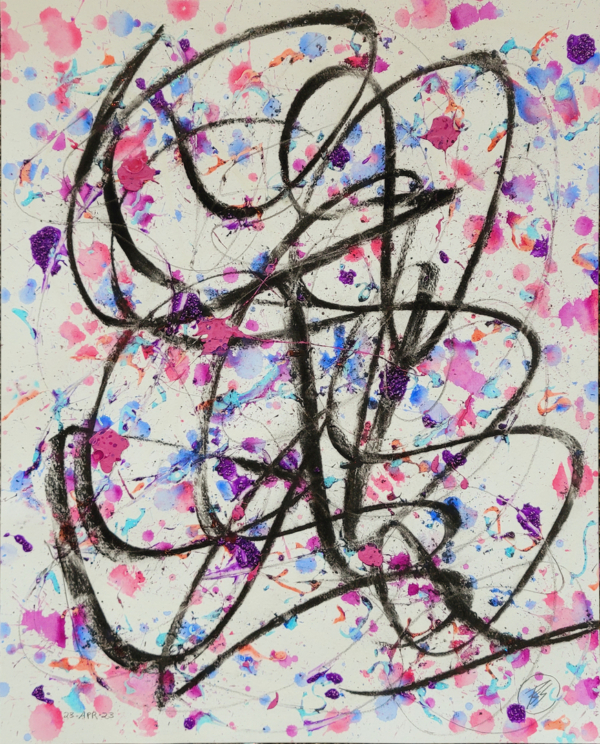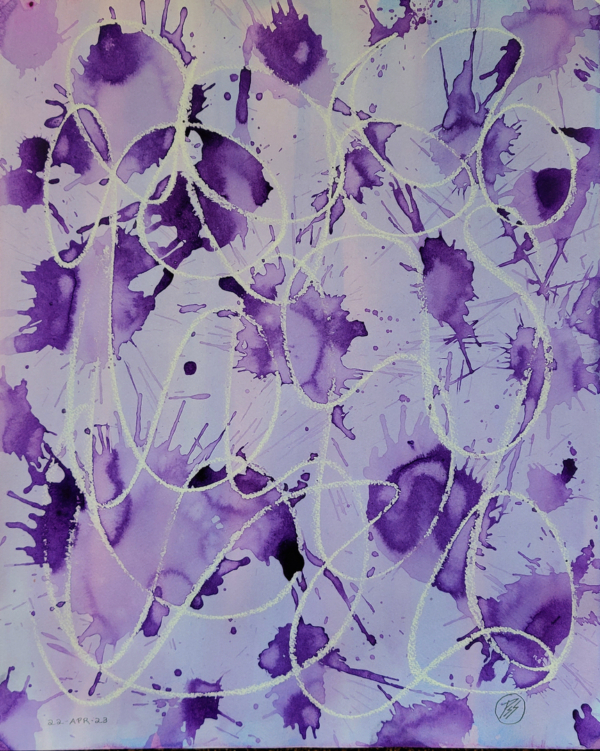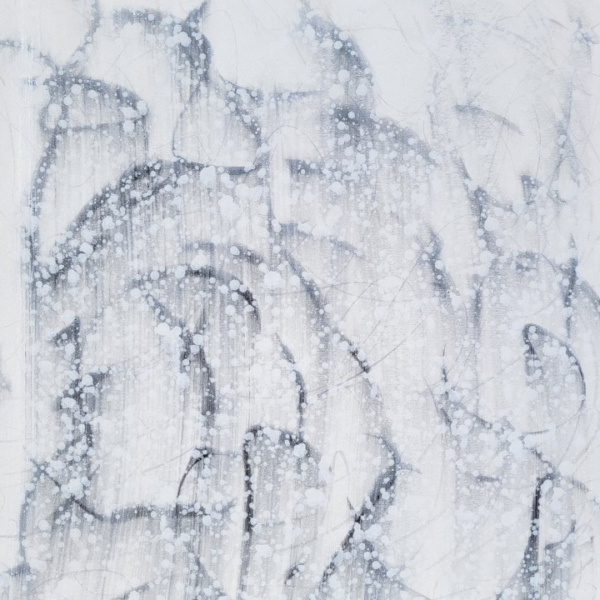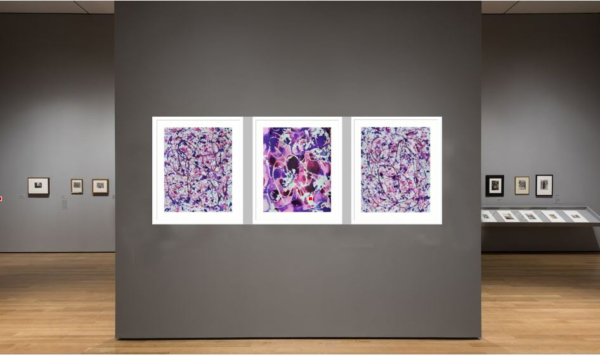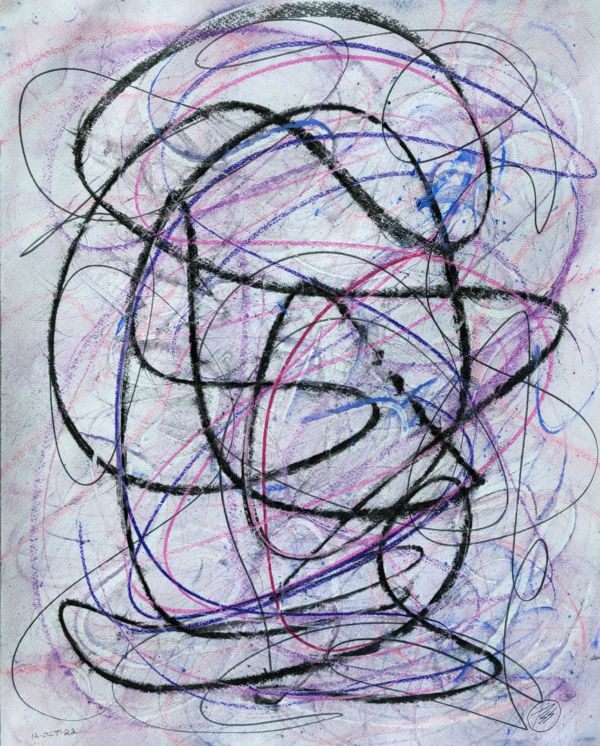Chaotic Tidal Impulse Disrupter Flare-ups
The artworks in this series are based on scientific theories that express the emotional and physical challenges of creating spontaneous paintings.
By making highly complex and chaotic artworks the artist has trapped the essence of chaos in a moment of time. Some of the works are what the artist calls Particle Footprints or Signatures of Quantum SpaceTime Subatomic Collisions. (i.e. Higgs bosons are produced by colliding protons decaying into hadron jets and electrons). Imagine just an average day at the The Large Hadron Collider (LHC). The world’s largest single machine and most powerful, most complex experimental facility ever built. It was created by CERN in collaboration with over 10,000 scientists and engineers from over 100 countries. It lies in a tunnel 27 kilometres (17 mi) in circumference, as deep as 175 metres (574 ft) beneath the France–Switzerland border. What transpires at this magnificent example of human ingenuity and creativity is awe inspiring and on the cutting edge of science in the 21st century.
Influencers:
Loop quantum gravity (LQG) is a theory of quantum gravity, merging quantum mechanics and general relativity. It is an effort to unify gravity in a common theoretical framework with the other three fundamental forces of nature. It is the leading competitor to string theory. LQG begins with relativity and tries to add quantum features, while string theory, conversely, begins with quantum field theory and tries to add gravity.
From the point of view of Albert Einstein’s theory, it comes as no surprise that all attempts to treat gravity simply like one more quantum force (on par with electromagnetism and the nuclear forces) have failed. According to Einstein, gravity is not a force – it is a property of space-time itself. Loop quantum gravity is an attempt to develop a quantum theory of gravity based directly on Einstein’s geometrical formulation.
In order to do this, in LQG theory space and time are quantized, analogously to the way quantities like energy and momentum are quantized in quantum mechanics. The theory gives a physical picture of spacetime where space and time are “granular”. The granularity is a direct consequence of the quantization. It has the same nature as the granularity of the photons in the quantum theory of electromagnetism and the discrete energy levels of atoms. Here, it is space itself that is discrete. In other words, there is a minimum distance possible to travel through it.
More precisely, space can be viewed as an extremely fine fabric or network “woven” of finite loops. These networks of loops are called spin networks. The evolution of a spin network over time is called a spin foam. The predicted size of this structure is the Planck length, which is approximately 10−35 meters. According to the theory, there is no meaning to distance at scales smaller than the Planck scale. Therefore, LQG predicts that not just matter, but space itself, has an atomic structure.
Chaos Theory studies the behavior of dynamical systems that are highly sensitive to initial conditions—a response popularly referred to as the butterfly effect. Small differences in initial conditions yield widely diverging outcomes for any open system, such as weather and climate. Chaos Theory has applications in several disciplines, including meteorology, sociology, physics, environmental science, computer science, engineering, economics, biology, ecology, and philosophy.
Complexity Theory evolves far from equilibrium at the “Edge of Chaos.” The phrase “Edge of Chaos” has come to refer to a metaphor that some physical, biological, economic and social systems operate in a region between some semblance of “order” AND complete randomness or chaos, where complexity is maximal. A critical state built up by a history of irreversible and unexpected events, which physicist Murray Gell-Mann called “an accumulation of frozen accidents.”
7.5% of the proceeds of every sale will be donated to the Multiple Myeloma Research Foundation.
-
Calibi Yau Studies purple V
I wanna tell you ’bout a dance That’s goin’ around Everybody’s doin’ it From the grownups down Don’t move your head Don’t move your hands Don’t move your lips Just shake your hips Do the hip shake, babe Do the hip shake, babe Shake your hip, babe Shake your hip, babe What you don’t know Don’t be afraid Just listen to me And do what I say Don’t move your head Don’t move your hands Don’t move your lips Just shake your hips Do the hip shake, babe Do the hip shake, babe Shake your hip, babe Shake your hip, babe Well ain’t that easy Well, I met a little girl In a country town She said, “What do you know There’s Slim Harpo!” Didn’t move her head Didn’t move her hands Didn’t move her lips Just shook her hips Do the hip shake, babe Do the hip shake, babe Shake your hip, babe Shake your hip, babe Well ain’t that easy.
- Shake Your Hips, Slim Harpo -
Strawberry Cake with Birthday Candles and Sprinkles for SUE
Good sense, innocence, cripplin’ mankind Dead kings, many things I can’t define Occasions, persuasions clutter your mind Incense and peppermints, the color of time Who cares what games we choose? Little to win, but nothin’ to lose Incense and peppermints, meaningless nouns Turn on, tune in, turn your eyes around Look at yourself, look at yourself, yeah, girl Look at yourself, look at yourself, yeah, girl, yeah, yeah To divide the cockeyed world in two Throw your pride to one side, it’s the least you can do Beatniks and politics, nothin’ is new A yardstick for lunatics, one point of view.
- Incense and Peppermints, Strawberry Alarm Clock
